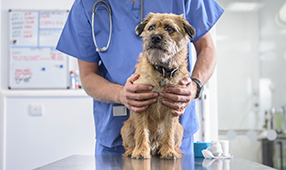Mother Nature was busy wreaking havoc in 2020. Wildfires out West. Violent thunderstorms in the Midwest. Hurricanes in the North Atlantic.
Total losses nationwide from natural disasters climbed to $95 billion in 2020, up from $51 billion the year before. And about 30% of those losses were uninsured, according to Munich Re’s latest natural catastrophe database report.
You can’t ever predict what Mother Nature has in store, but you can make a plan to help minimize both physical damage and monetary hardship. Try these expert tips to help protect your property and finances if a natural disaster strikes.
Shore up your emergency savings
An emergency fund should be a basic tool in your disaster preparedness kit. If you’re forced to evacuate your home or lose your job following a natural disaster, you can use your emergency savings to help cover your expenses or start making repairs while you wait for your insurance claim to be processed.
The standard recommendation is to set aside three to six months’ worth of living expenses for emergencies in an interest-bearing account separate from your other savings.
Make sure you have the right insurance coverage
Many people discover too late that they don’t have enough insurance to fully recoup their losses, or worse–that their homeowners or renters policy doesn’t even cover the kind of damage their property sustained.
For example, a homeowner’s policy typically will cover severe weather damage from wind or wind-driven rain that comes through your roof or windows. But it won’t cover flooding. You would need to separately purchase flood insurance, which is available under the federal National Flood Insurance Program (NFIP) and can be bought through an agent.
To help evaluate your need for this type of insurance, you can find out your property’s flood risk by using FEMA’s Flood Map Service Center. Flood coverage takes effect 30 days after purchase, so make sure you buy it before hurricane season starts.
Review your auto and home insurance coverage to make sure it’s sufficient.
Pet owners also can help get peace of mind when taking care of their dogs and cats during a natural disaster. The NEA Pet Insurance Program offers members customized plans for accidents, illness and/or routine care; and all policyholders get access to the 24/7 Pet Helpline staffed by veterinary experts. Members can save up to 90% on eligible veterinary bills1.
Keep copies of your policies and other important documents you might need in an emergency in a fire-resistant box at home that you can grab on your way out if you must quickly evacuate. Or, create electronic copies of documents, then save them to an encrypted USB memory stick or a secure cloud-based account.
Protect your income to help avoid bill delinquency
It’s not just property that needs protection: Natural disasters could lead to injuries that temporarily take you away from work. Disability insurance can help you keep up with the mortgage and other monthly bills and necessities while you’re on the mend.
Having this kind of insurance can mean you don’t have to dip into retirement savings or put all of your living expenses on credit cards until you recover. Being able to continue paying bills on time during this time is important because you don’t want your credit score to take a hit, thereby impacting your purchasing power in the future.
With the NEA Income Protection Insurance Plan, you can continue to receive two-thirds of your monthly salary (up to $6,000) and determine when you want the benefits to kick in and for how long.
Create a home inventory to make filing claims easier
You may need to file a claim after a natural disaster, and the insurance company will need a list of items lost as well as their value. Maintaining a record of personal belongings along with their receipts can help ensure that you’re reimbursed for your losses and that you don’t overlook any items.
To create an inventory, you can photograph your belongings. The Insurance Information Institute recommends that you label the pictures with information about when you purchased the item, the price, serial numbers, or make and model. Or make a video recording of your household possessions, describing them and their monetary value. Inventory apps also allow you to document and photograph valuables room by room.
Keep a copy of a paper inventory outside your home, or back up a digital file so you can easily access it in an emergency. Remember to update your inventory as you add to your belongings.
Draft an emergency evacuation plan
You may not have much time to evacuate if you’re in the path of a hurricane, tornado or wildfire. Having an exit strategy and family emergency plan documented well in advance can save you valuable time and reduce anxiety when you need to get to safety in a hurry.
Take these four steps to prepare your evacuation plan:
- Determine where you will go if you must leave your home quickly. Will it be a relative’s house, or a hotel in another state? Make sure you have more than one option, and keep relevant phone numbers and addresses handy, advises the Insurance Information Institute.
- Designate a place where family members can meet up if they get separated.
- Map out your primary and alternate routes in case some roads are closed or too busy. Determine which routes provide convenient access to gas stations, eateries and hotels or other lodging.
- Review all the “Make a Plan” resources at Ready.gov to fine-tune your emergency preparedness plan.
If you need to stay in a hotel until it’s safe to return home, check for NEA member discounts through NEA Travel: Hotels. You could save up to 60% off your stay.
Prepare your vehicle for an emergency road trip
You may have a few days’ notice before a possible evacuation—or you may have no warning at all. Either way, keep these necessities in the trunk at all times to ensure your vehicle is prepared for the journey to safety.
- An emergency kit stocked with flares, flashlights, a lantern or portable LED lamp; jumper cables; a spare tire and an air pump (or compressed air); and a printed road atlas in case GPS and internet are unavailable.
- A portable radio, such as a wind-up shortwave radio with LED light; cellphone chargers and cords; and extra supplies of AA and AAA batteries.
- A first-aid kit with wound care, medications and disinfectants.
- Protective, weather-proof clothing such as boots, umbrellas and coats.
Many of these kinds of survival-kit items can be purchased through retailers in the NEA Discount Marketplace, where you can find lots of great deals and earn cash back when you shop.
If you have advance notice that evacuation may be imminent, make sure you have a full tank of gas and enough bottled water and food so you don’t have to stop unnecessarily.
Focus on recovery and repairs
Returning home to find that it’s damaged or even unlivable can be overwhelming. Although rebuilding what you lost can take time, the sooner you start, the better.
Here are four steps you can take to begin the process of recovering from a natural disaster:
1. Assess and document the damage. Walk through your home with a smartphone and take a video of each room with a running commentary about the damages before you do anything to the house. Open closets and drawers to show the damage to your possessions, too. The documentation will help when you’re making an insurance claim.
2. Call your insurance company immediately to file a claim. Insurers get tons of claims after a natural disaster, so getting yours in early can speed up response times, repairs and reimbursements.
3. Prevent further damage by making temporary repairs, such as covering broken windows or holes in the roof. Don’t make permanent repairs until an adjuster has seen the damage and authorized the work.
4. Work with adjusters to review the damage. If you have multiple policies, you may have to work with several adjusters (for example, one for your homeowners insurance and another for flood damage). Be on-site when the claims adjuster arrives, and take copious notes of all your discussions. Your notes can come in handy if you encounter any claims problems later.
If your insurer denies your claim or pays you less than what you believe you’re owed, ask for a written explanation and how to appeal the company’s decision. If your appeal fails, you can file a complaint with your state insurance department.
If your home is too damaged to stay in until repairs are complete, or if your car is damaged and is in the shop for an extended period of time, consider staying in a hotel (find discounts with NEA Travel: Hotels) or renting a car (find discounts with NEA Travel: Car Rental). And if you end up needing to purchase a new or used vehicle, look for deals through the NEA Auto Buying Program.
Find additional sources of help
Apply for disaster aid from government organizations. If you’re in a federally declared disaster zone, start with FEMA, which provides assistance for a variety of damages not covered by insurance. You can also call toll-free at (800) 621-3362.
Contact your state emergency management agency for additional resources, even if you’re not in a disaster area. Other government organizations that provide disaster aid include Fannie Mae Disaster Resiliency and Relief, Freddie Mac’s Disaster Relief and Disaster Relief Options for FHA Homeowners.
Contact your loan or debt servicers. If you’re temporarily unable to keep up with your monthly payments after a disaster, ask about disaster forbearance options to temporarily reduce or suspend your payments. This can apply to mortgages, student loan debt and other lenders. Or, see if the servicer will at least waive late fees.
Rely on NEA Member Benefits. NEA Member Benefits offers a variety of resources and updated information for members affected by FEMA-declared natural disasters. Check to see if you might eligible to receive accommodations from NEA’s program partners.
If you require help covering additional expenses, consider the NEA Personal Loan program, in partnership with First National Bank of Omaha (FNBO®). A personal loan consultation is free, and our preferred-rate loans can help you cover major expenses of up to $30,000.2
1. Select a plan that reimburses 70%, 80%, or 90% of the cost of eligible veterinary treatment. Limited to covered expenses. Terms and conditions apply. See policy for details. Pet insurance coverage is offered and administered by Pets Best Insurance Services, LLC and is underwritten by American Pet Insurance Company, a New York insurance company. Please visit www.americanpetinsurance.com to review all available pet health insurance products. Terms and conditions apply. See policy for details.
2. Loans cannot be used for postsecondary educational expenses or tuition, or to consolidate postsecondary educational loans.
Loans are made and serviced by First National Bank of Omaha (FNBO®).












